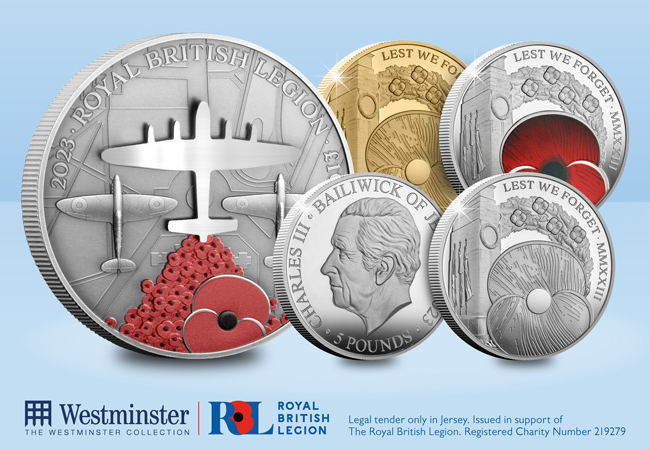Second World War
The Sherman Firefly Tank: Unleashing Fury on D-Day and Beyond
Click here to view the brand new 80th anniversary of D-Day coin range featured in this video.
From the hedgerows of Normandy, France, to the hills of Italy, the Sherman Firefly stood out among Allied tanks as a fearsome adversary for the German forces during World War II. This modified version of the Sherman Tank played a crucial role in the historic D-Day invasion and beyond.
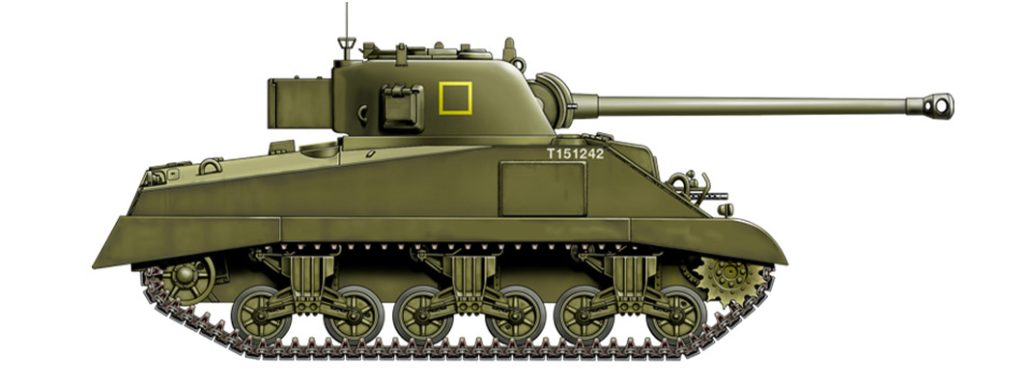
The Challenge:
The original M4 Sherman tank faced limitations with its basic 75 mm gun against formidable German tanks like the Panther and Tiger. The solution came in the form of the 17 Pounder, a powerful British gun capable of taking down any known German armour at the time. The challenge was to integrate this formidable weapon onto the Sherman Tank. Despite initial opposition from the Ministry of Supply, by October-November 1943, the concept gained momentum, receiving the highest priority from Winston Churchill in preparation for D-Day.
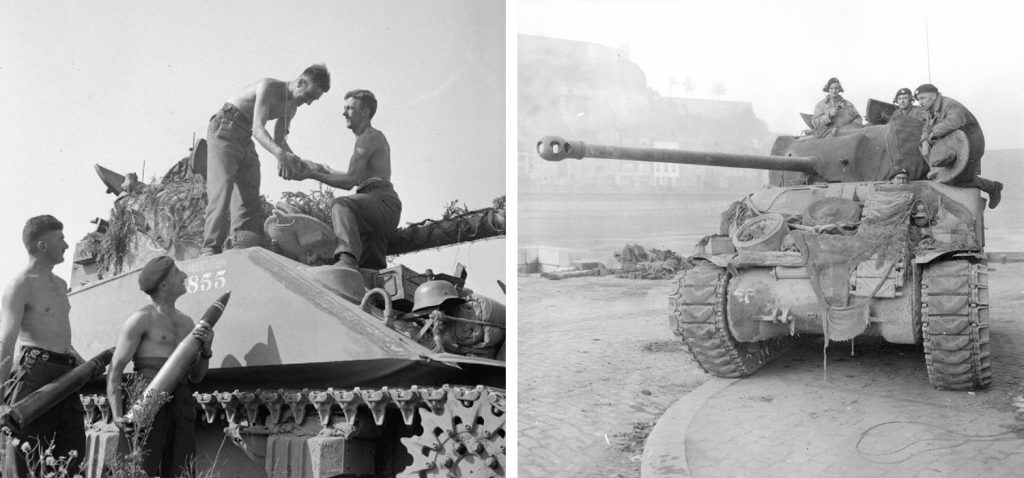
D-Day Deployment:
As the crucial day approached, the Sherman Firefly became a secret weapon in the Allied arsenal. Deployed just in time for D-Day, it filled the ranks of the 21st Army Group’s Armoured Brigades. Allied intelligence had not anticipated the presence of formidable German tanks, making the Sherman Firefly a critical asset in facing unexpected threats.
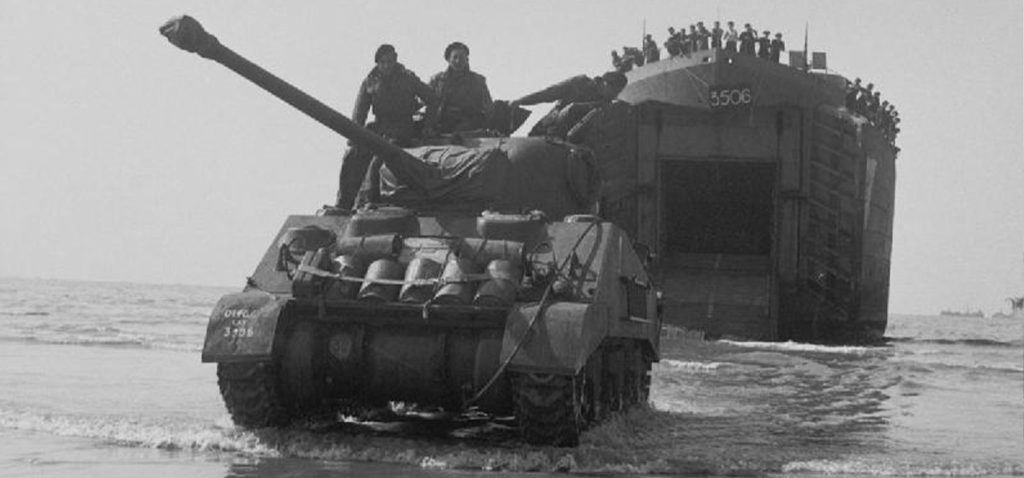
On the Battlefield:
The Sherman Firefly quickly gained a reputation as a game-changer. In the chaos of D-Day, the Sherman Firefly’s firepower proved decisive in repelling German attacks and securing vital beachheads.
The Sherman Firefly’s effectiveness became legendary, with notable instances like Lt. G. K. Henry’s five Panthers knocked out in rapid succession with only six rounds. Even the feared German tank ace Michael Wittman is believed to have fallen to a Canadian Sherman Firefly.
Legacy:
Over 1,900 Sherman Fireflies served in various Allied divisions, making significant contributions in Normandy, Italy, and beyond. Post-war, Sherman Fireflies found new homes in countries like Italy, Lebanon, Argentina, Belgium, and the Netherlands.
Click here to view the other key elements featured on the D-Day 80th Anniversary coin design.
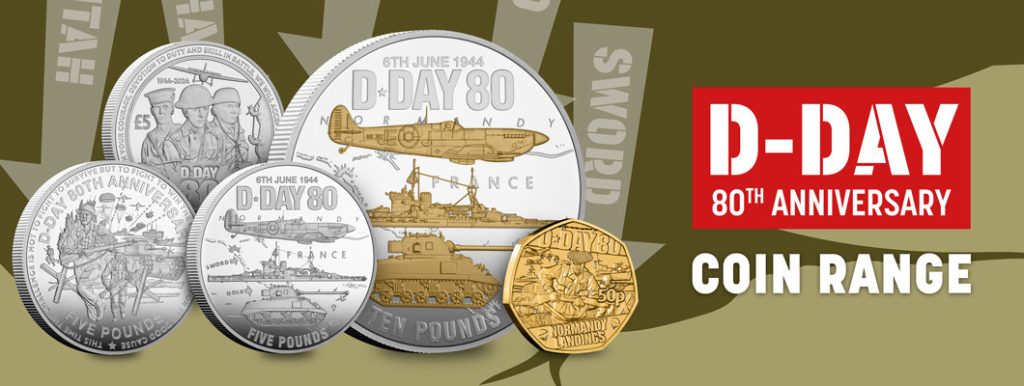
We strive for historical accuracy in our content. If you notice any inaccuracies, please let us know. Your feedback will help us maintain and improve the integrity and accuracy of our information.
D-Day: The Epic Turning Point in World History
This year marks the 80th anniversary of D-Day, a pivotal event on June 6, 1944, that significantly altered the course of World War II and influenced the fate of nations.
D-Day, also known as Operation Overlord, was an immense Allied invasion executed by Land, Sea, and Air. The mission: secure a stable position in Western Europe, paving the way for the liberation of nations oppressed by Adolf Hitler’s Third Reich.
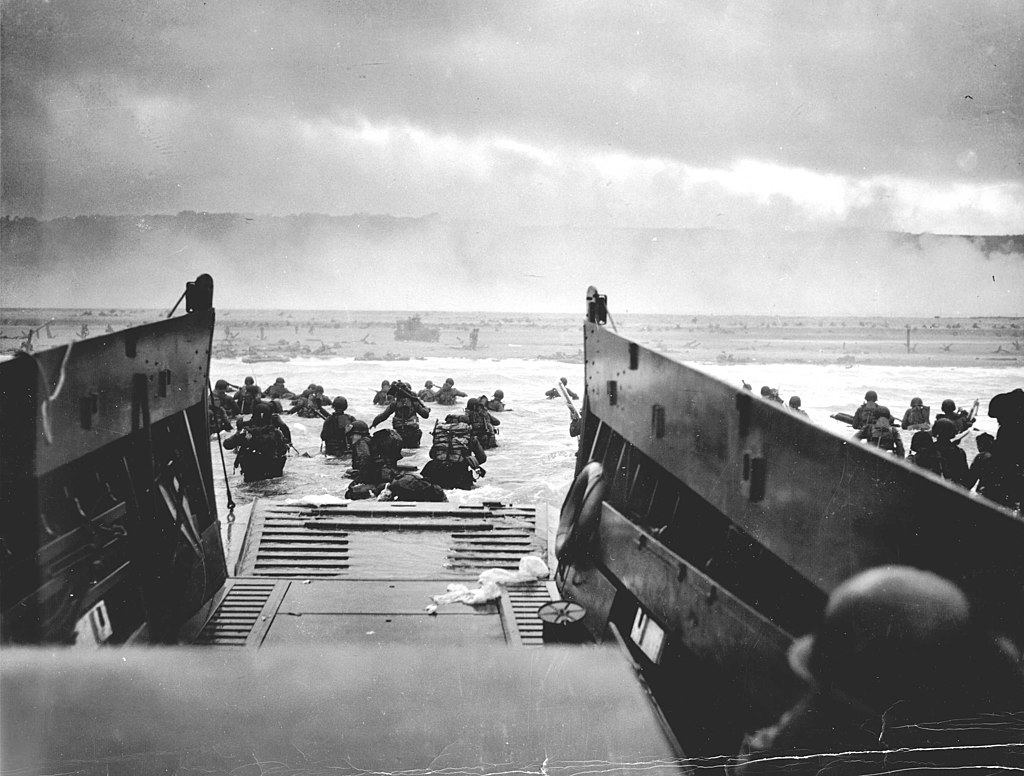
A crucial element of D-Day involved the simultaneous landing of Allied forces on five Normandy beachheads: Utah, Omaha, Gold, Juno, and Sword. This coordinated effort stands as the largest amphibious assault in the history of warfare.
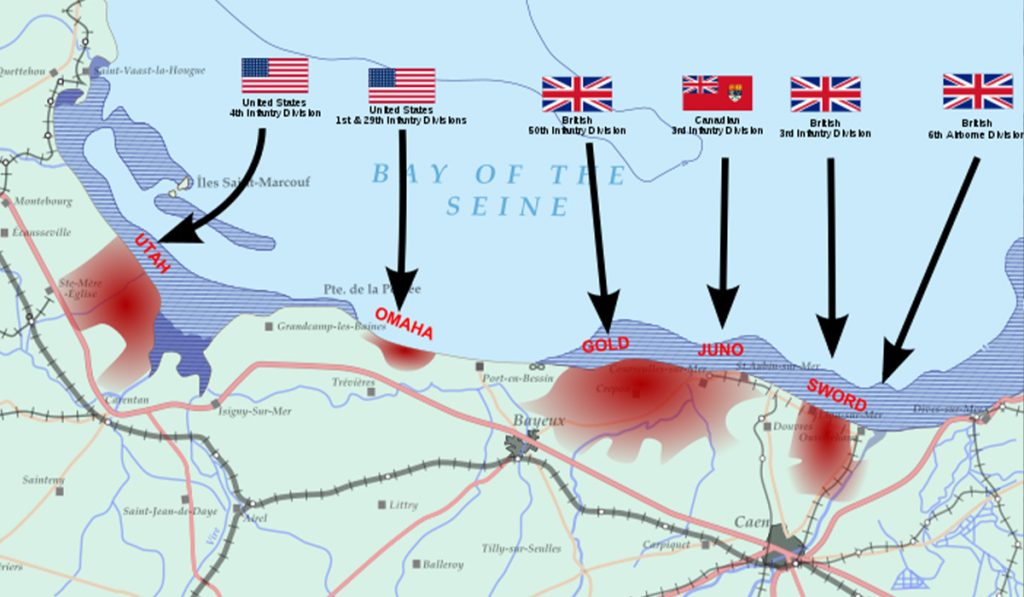
More than 156,000 Allied troops from Great Britain, the USA, Canada, and other nations participated in this invasion. These brave individuals worked together meticulously to establish a secure foothold in Western Europe.
Operation Overlord featured an extensive naval armada with over 5,000 vessels and air support from more than 11,000 aircraft. This combined effort was essential for the success of the landings.
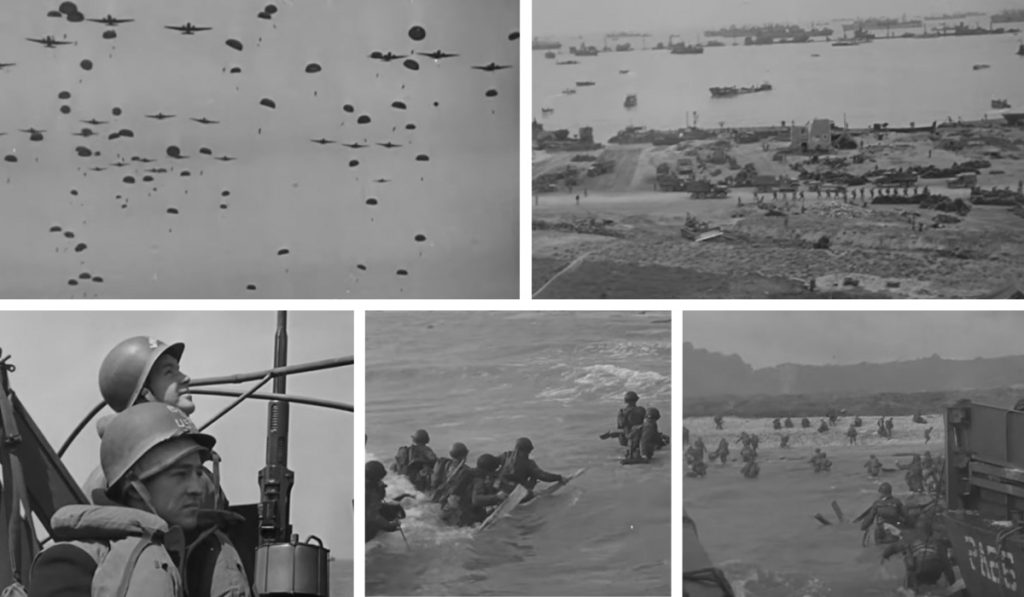
In the lead-up to the beach landings, thousands of paratroopers were airdropped behind enemy lines to disrupt German defenses and secure strategic objectives, adding an extra layer of complexity to the plan.
The invasion force brought an unprecedented amount of firepower, including tanks, artillery, and well-equipped infantry. The objective was clear: to overwhelm German defenders and establish a secure beachhead.
However, the human cost of D-Day was immense. On that single day, thousands of Allied soldiers lost their lives, and many more were wounded. The beaches of Normandy hold a sacred place in history, symbolising the price paid for the pursuit of freedom.
To commemorate the 80th anniversary of D-day, a brand new range of commemorative coins have been issued. Take a look at the brand new designs and shop the whole range via the link below.
The 80th Anniversary of D-day commemorative coin range.
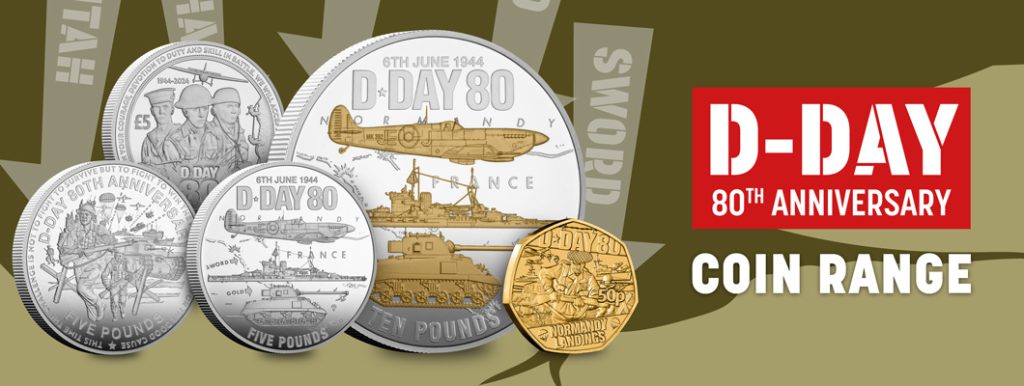
“We retraced the steps of the Dambusters”. How these pilots raised thousands for the RBL.
Last month we travelled to Compton Abbas Airfield in Dorset to meet two pilots who have raised thousands for the Royal British Legion.
Jason Davidson and Simon Shackell flew in specially to tell us all about a remarkable challenge they took on in May.
To mark the 80th anniversary of the Dambusters Raid, they undertook a commemorative flight to recognise the technical skills, ingenuity and courage of those who conducted the legendary air operation.
And in doing so, they have already raised over £3,000 for the Royal British Legion!
Watch below as we meet Jason and Simon, who tell us about the challenge and why they chose to raise funds for the RBL.
We were delighted to gift Jason and Simon a 2023 Royal British Legion Poppy® Silver Proof £5 each as well as the FINAL 2023 Poppy® Silver Masterpiece Coin to be struck to honour their achievements and thank them for their fundraising efforts…
Watch the interview and gifting in full below or read on to find out more about Jason and Simon’s story…
Click here to view Jason and Simon’s fundraising page >>
Jason and Simon’s Story
Both Simon and Jason have a close connection to the military – Jason served in the Parachute Regiment for over 22 years and his twin brother was also in the RAF. Simon’s father was a navigator in the RAF during National Service.

They took on the challenge as they were inspired by the bravery and skill that the 617 Squadron showed. Simon said that the idea was to “champion the engineering aspect” as well as the airmanship. “It really struck home how difficult that would have been, and how dangerous. The airmanship was what blew me away”, Jason said.

On 16th May 2023, the 80th anniversary of the Dambusters Raid, Jason and Simon began their challenge – departing from the RAF St Athan airfield site on a mission to pass over 8 locations:
- Chesil Beach, Dorset – testing location for the “bouncing bomb”
- Reculver Bay, Kent – testing location for the “bouncing bomb”
- East Kirkby Aviation Heritage Centre, Lincolnshire – a unique living museum to the Dambusters and home of ‘Just Jane’.
- Woodhall Spa, Lincolnshire – home of the Dambusters Memorial
- RAF Scampton, Lincolnshire – the wartime base of the 617 Squadron and location where the Raid was launched
- Derwent Dam, Sheffield – a location closely resembling the Möhne Dam where the Dambusters practiced for the Raid.
- Nant-y-Gro Dam, Rhayader – the site where Barnes Wallis successfully demonstrated the concept of the depth charge mine.
- Penarth, Glamorgan – the site of Wing Commander Guy Gibson’s memorial and his wartime home.
Jason and Simon conducted each flight using only maps, stopwatches and compasses to navigate as the Dambusters did.

You can find out more about the challenge and donate here >>
The 2023 Official RBL Poppy® Coin Range
For nearly 20 years, The Westminster Collection has released coins in support of the Royal British Legion – and collectors have raised over £1.25 million for the RBL.
The 2023 coin range is available to order now but with stock selling fast, you’ll need to act today to secure your tribute…
Prices start from JUST £25 (+p&p) – Click here to view the range >>

